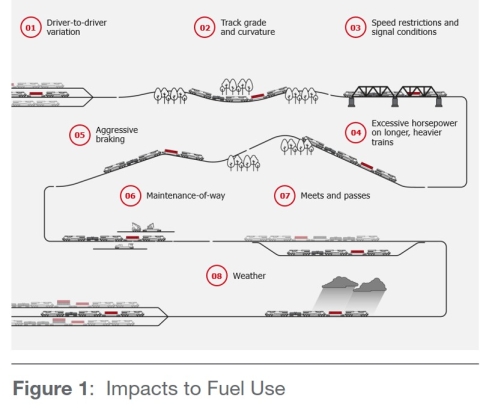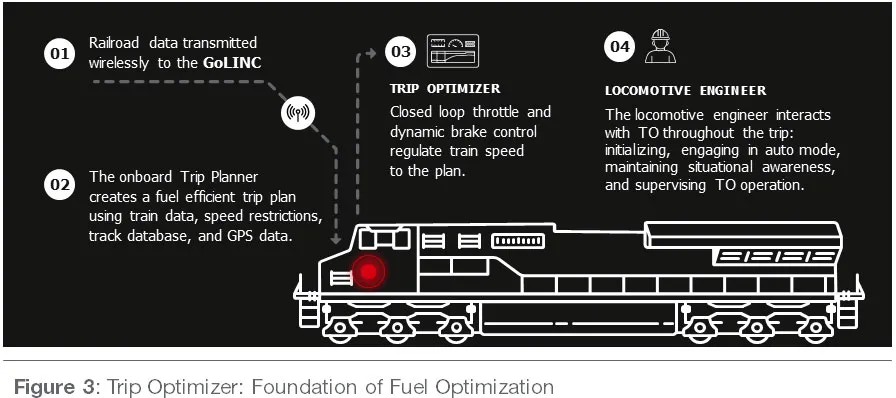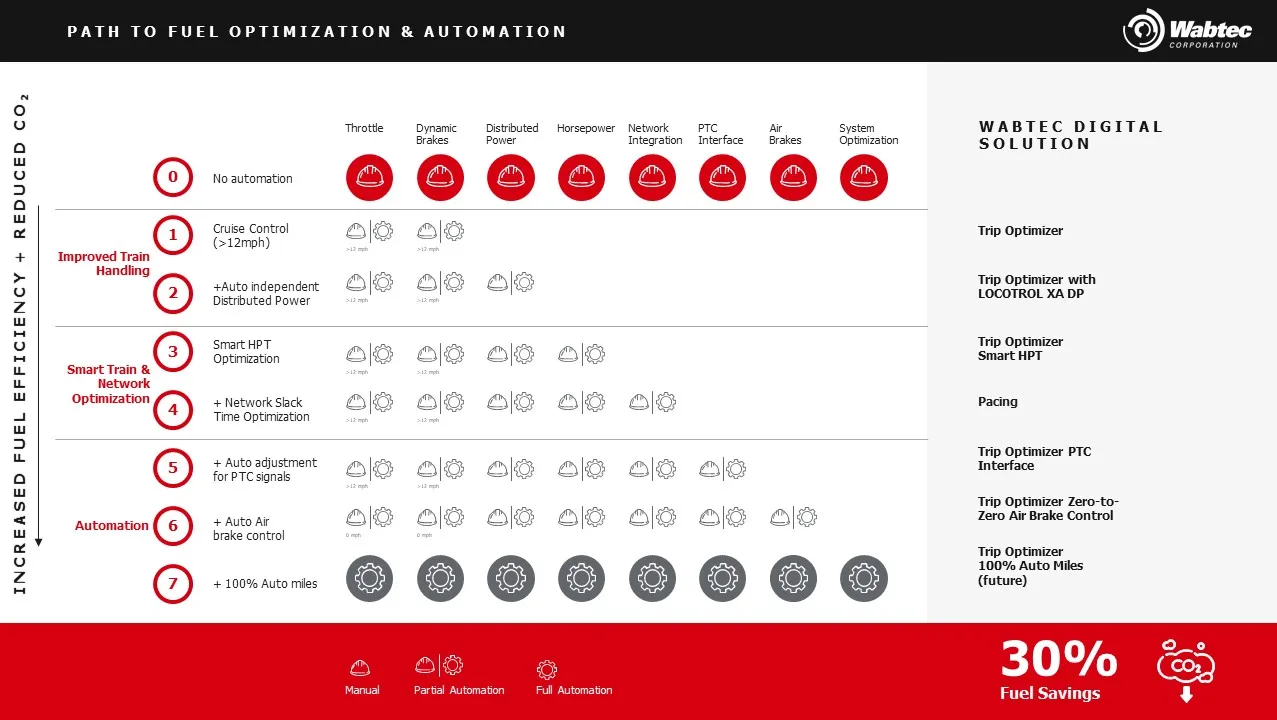Introduction
Fuel is a major factor in railroad operations, comprising, on average, 15-20% of operating expenses and 90% of greenhouse gas emissions. So, when railroads consume less fuel, it’s a win-win for the railroad and the environment: lower operating costs and reduced carbon emissions.
Today, rail is the most energy-efficient and cost-effective mode to move freight. Efficiencies have been growing across the industry for decades. In 1980, U.S. Class 1 trains, on average, moved a ton of freight 235 miles per gallon of fuel. Today, that distance has more than doubled to 489 miles on a single gallon1.
So, what is next? How do railroads take fuel optimization to the next level? How can every train be the most efficient? The answer lies in the factors that impact fuel utilization.










